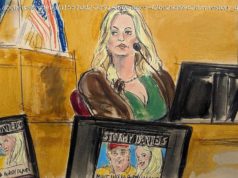Some players grumble about a lot of rules to curb dangerous tackles but insist they are still hitting very, very hard.
President Trump says the N. F. L. has gone soft.
It’s true that yellow penalty flags now litter the field for vicious collisions that once were celebrated. Video clips of those jarring hits used to be collected and edited into a highlight reel for an ESPN prime-time segment called, “Jacked Up.”
The announcers, watching and anticipating the impact, would raise their voices in a jubilant roar at the climactic moment: “He got… jacked up!”
ESPN retired the segment several years ago. Times have changed.
Every season, more rules are passed to protect the players, and without the N. F. L. saying so, to inhibit some of the inherent violence. It’s undeniable that what had been part of the league’s appeal — big hits — are being incrementally marginalized.
And while no one on television still shouts about players getting “jacked up,” the sentiment that something has been lost persists.
Football was once raw and unfettered. Now it is regulated. And more regulation is not only unpopular in large swaths of America, it might be especially so in places where football is like a religion.
Even players admit to feeling conflicted, with limits on hitting extending to practices where they practice … hitting.
“I miss some of the old ways,” said Giants center Weston Richburg. “Having someone banging against your pads in practice does help you prepare for the amped up intensity of a game.
“Are you ready? Because in a game, everyone is moving at full speed and pads are popping.”
But at the same time, current players look at retirees from the game and see how many of them are hobbled or mentally infirm.
Players today began youth or high school football before all the new rules, penalties and restrictions were enacted. They grew up, as many fans did, with an almost primal attraction to football’s aggression.
The players long to be safer; several have told me of the desire to one day play with their grandchildren. But they also want to play football.
“It’s a game where you hit people,” the Pro Bowl linebacker Jon Beason told me two years ago. “You can’t get away from that and I don’t want to.
“The hitting in practice, for instance, you weed out a lot of guys. You know who’s really down for the cause. It’s essential. But they’ve taken that away.”
It is true that N. F. L. teams no longer do blocking and tackling in the vast majority of practices. A modern N. F. L. practice is more like a glorified game of touch football. No one gets knocked around. If someone is on the ground, he probably tripped.
Behind the lack of hard contact, is a cold, hard business decision. Coaches and league executives are worried about injuries to players whom they pay on average about $2 million annually.
The impetus for change was new awareness about the dangers of concussions, head trauma and injuries of all kinds in a bruising game, along with the research that showed that more injuries occur in practice than games. And again, at the major college and N. F. L. level, protecting the players also meant protecting the bottom line. When a star like Tom Brady of the New England Patriots was seriously injured and missed the 2008 season – on a hit that would now be ruled illegal — television ratings slipped, though there may have been other contributing factors behind that.
It might be telling that N. F. L. players who played both before and after the new contact restrictions were established tend to welcome them. The recently retired Giants guard Chris Snee, who remembers when linemen greeted opponents with a meaty slap on the head as plays began, said he appreciated the added protection.
“Rules against shots to the head made a lot of sense to me,” said Snee, a four-time Pro Bowl selection.
Snee also insisted, however, that the football field still remains no place for the meek.
“Guys are bigger and faster and just as physical,” he said. “It’s still tough out there, I’m sure of that.”
Other players who remember when there were virtually no safeguards against blindside and helmet-to-helmet hits bristled at the suggestion that the N. F. L. had somehow gone soft.
Joe Theismann, the former Washington Redskins quarterback whose leg was gruesomely broken during a nationally televised game in 1985, called the sport “as violent as it’s ever been.”
“Trust me, these guys hit just as hard,” Theismann said Tuesday. “If you really watch the hits up close, you would not say the game is getting soft.”
Which may be entirely the point.
On the sideline, where I have watched plenty of games, the speed and size of the mammoth players, the ferocity of the collisions, the constant crack of pads pounding pads, usually leaves the uninitiated awe-struck but also a little shaken.
I’ve taken people down to the field, escorted them to within inches of the playing field and watched. After a play or two, they usually start retreating to a safer distance — five or 10 yards from the maelstrom.
It does not make them soft. If anything, it seems to give them an informed understanding of what it takes to play pro football.






